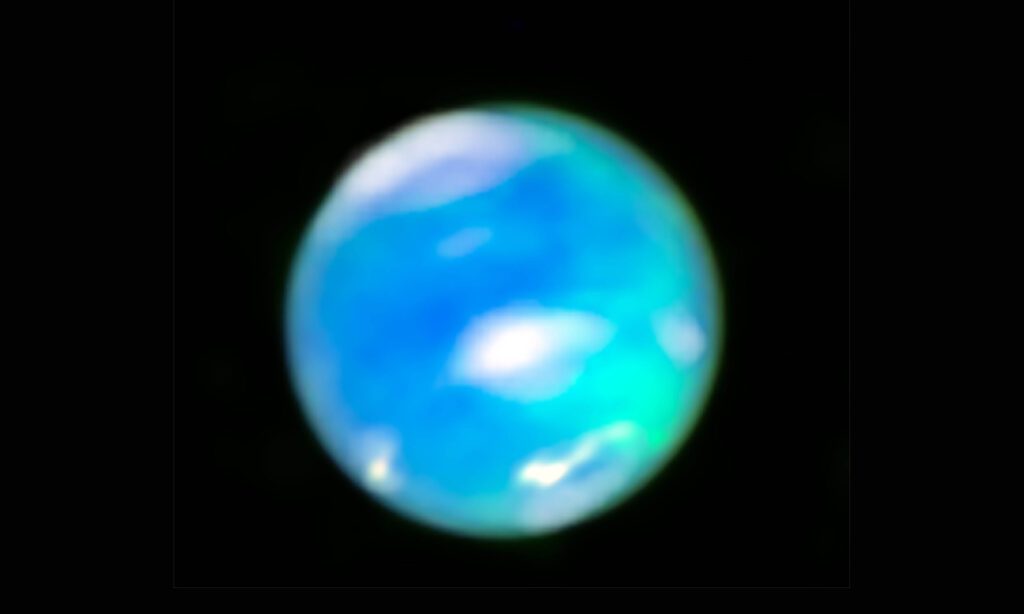Astronomers have successfully captured the first clear images of Neptune’s aurora using NASA’s James Webb Space Telescope (JWST), confirming long-suspected auroral activity. The images, taken in June 2023, reveal energy particles from the sun colliding with Neptune’s ionosphere, creating vivid emissions detectable in near-infrared light. Previously hinted at by the Voyager 2 mission in 1989, Neptune’s auroras remained elusive until now due to limitations in observational technology.
The JWST’s advanced near-infrared spectrometer provided definitive evidence, allowing scientists to identify H3+, a molecule associated with auroral activity, in Neptune’s atmosphere. This discovery not only confirms Neptune’s auroras but also reveals that its upper atmosphere has cooled significantly since 1989, explaining past difficulties in observing its auroras.
Neptune’s unique magnetic field, tilted 47 degrees from its rotational axis, leads to auroras appearing in mid-latitudes rather than near the poles, differing from Earth. These findings open a new chapter in studying Neptune and its atmospheric behaviors, prompting plans for future observations over an 11-year solar cycle to further understand the interactions between solar particles and Neptune’s magnetic field. The study’s results were published in Nature Astronomy, marking a significant advancement in the exploration of the outer planets of the solar system.
Source link


